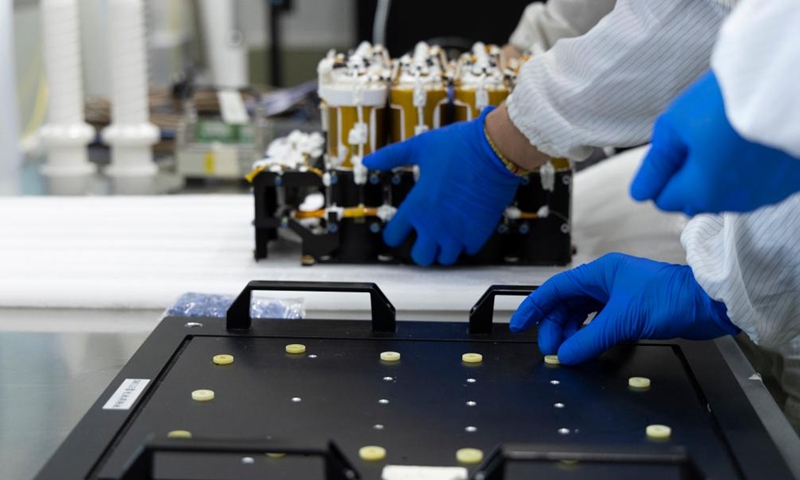China’s supreme court issues guidelines to enhance safeguards for sci-tech innovation

Technicians pack the battery pack of the Solar wind Magnetosphere Ionosphere Link Explorer (SMILE) at a workshop of the Innovation Academy for Microsatellites of Chinese Academy of Sciences (CAS) in Shanghai, east China, Nov. 4, 2024. (Photo/Xinhua)
The Supreme People's Court of China on Monday issued guidelines to enhance judicial safeguards for sci-tech innovation achievements. The guidelines present 25 measures across six key areas aimed at strengthening judicial support for technological advancements, China Media Group reported.
The guidelines released at Monday's press conference address key issues in handling cases related to technological innovation. They cover several important areas, including the overall requirements, strengthening the legal protection of technological innovation outcomes, protecting innovation entities, safeguarding innovative behaviors, building a legal and international market environment for technological innovation, and establishing a judicial protection system and mechanism.
The guidelines prioritize strengthening judicial protection for innovation outcomes. They highlight the importance of adopting judicial policies that ensure judicial protection intensity aligns with technological innovation levels. The administrative litigation standards for patent authorization and confirmation should be improved. Specific rules for protecting industrial design, the digital economy, commercial secrets, and key sectors are also outlined.
The guidelines also focus on safeguarding innovation entities, including determining the ownership of scientific and technological achievements, resolving technical contract disputes, and optimizing operational mechanisms for innovation entities. They emphasize protecting the rights of sci-tech personnel in profit-sharing from technology transfer, ensuring their reasonable returns, and addressing concerns of sci-tech personnel over technology transfer.
The guidelines also propose stringent measures against various forms of infringement, including the increased application of punitive measures to make infringing actions incur a greater cost.
The guidelines also commit to enhancing the establishment of a law-based and internationalized market environment for sci-tech innovation. This includes regulating unfair competition and monopolistic practices in the sci-tech innovation field, and advancing a national standards system in the field of sci-tech innovation.
The guidelines highlight the need for judicial reforms to bolster technological innovation. This includes improving the establishment of specialized intellectual property courts and enhancing judicial capacities.
To support the implementation of these guidelines, the Supreme People's Court has also released eight typical cases from the sci-tech innovation sector, covering areas such as biomedicine, semiconductors, algorithms, and renewable energy, demonstrating the courts' commitment to protecting innovation, along with a clear stance to severely crack down on behaviors that hinder technological innovation.
Photos
Related Stories
- Clinical trials for China’s BCI surgeries expected to enroll 30 to 50 patients in 2025
- Highlights of 2024 breakthroughs in new quality productive forces
- Chinese scientists develop biodegradable sponge capable of removing 99.8% of microplastics from water
- China tightens control on dual-use items
- China inaugurates first central SOE specializing in data tech
Copyright © 2025 People's Daily Online. All Rights Reserved.









